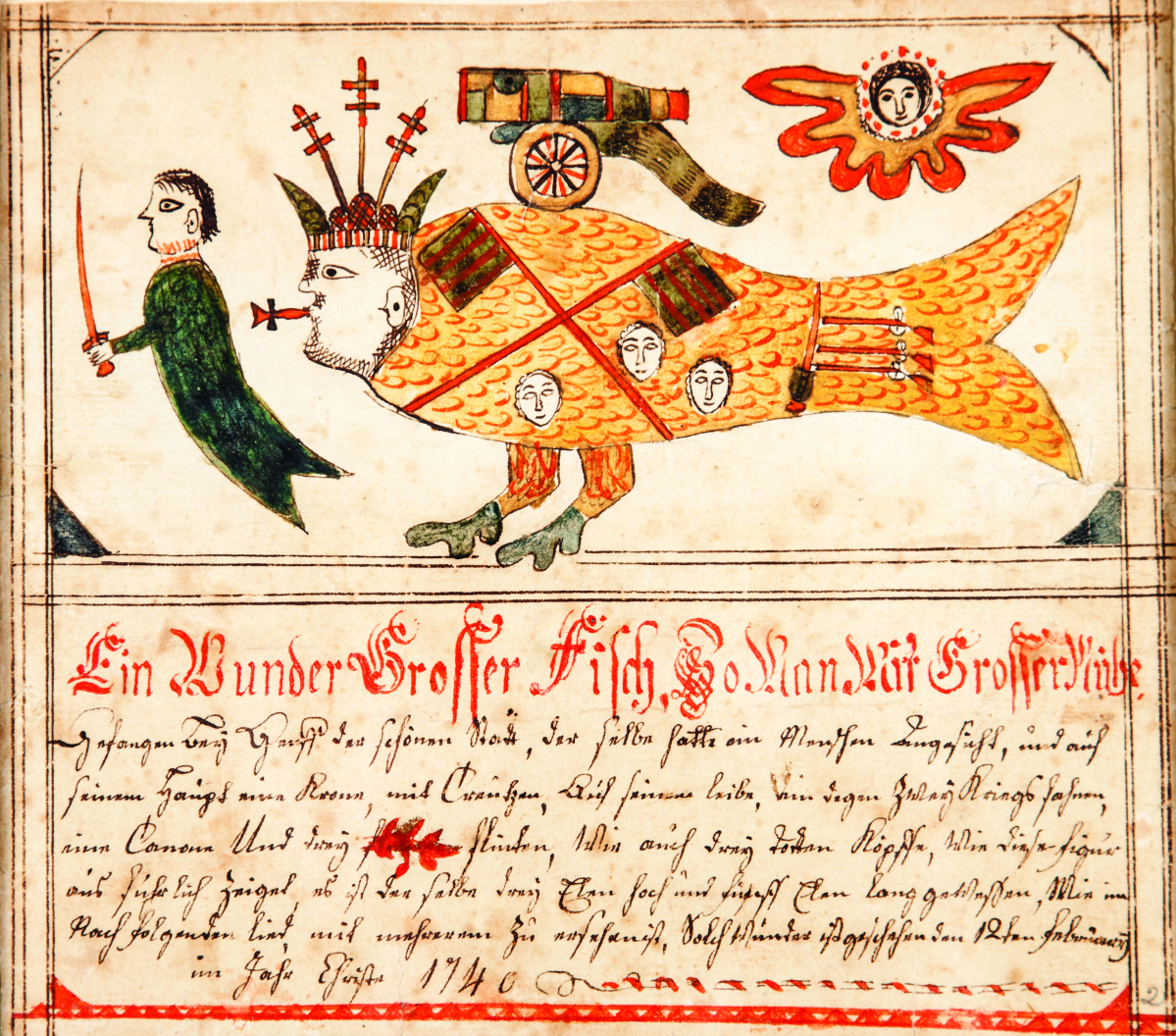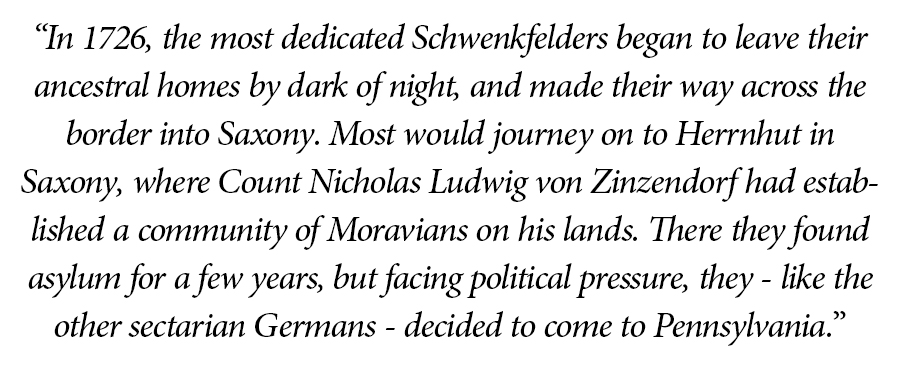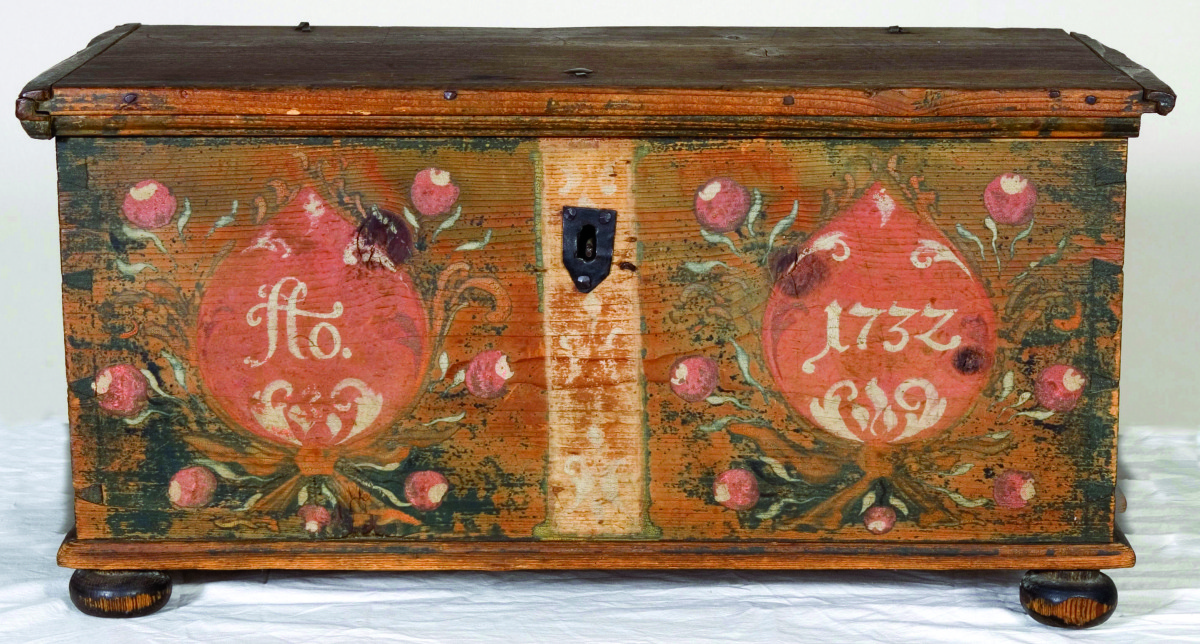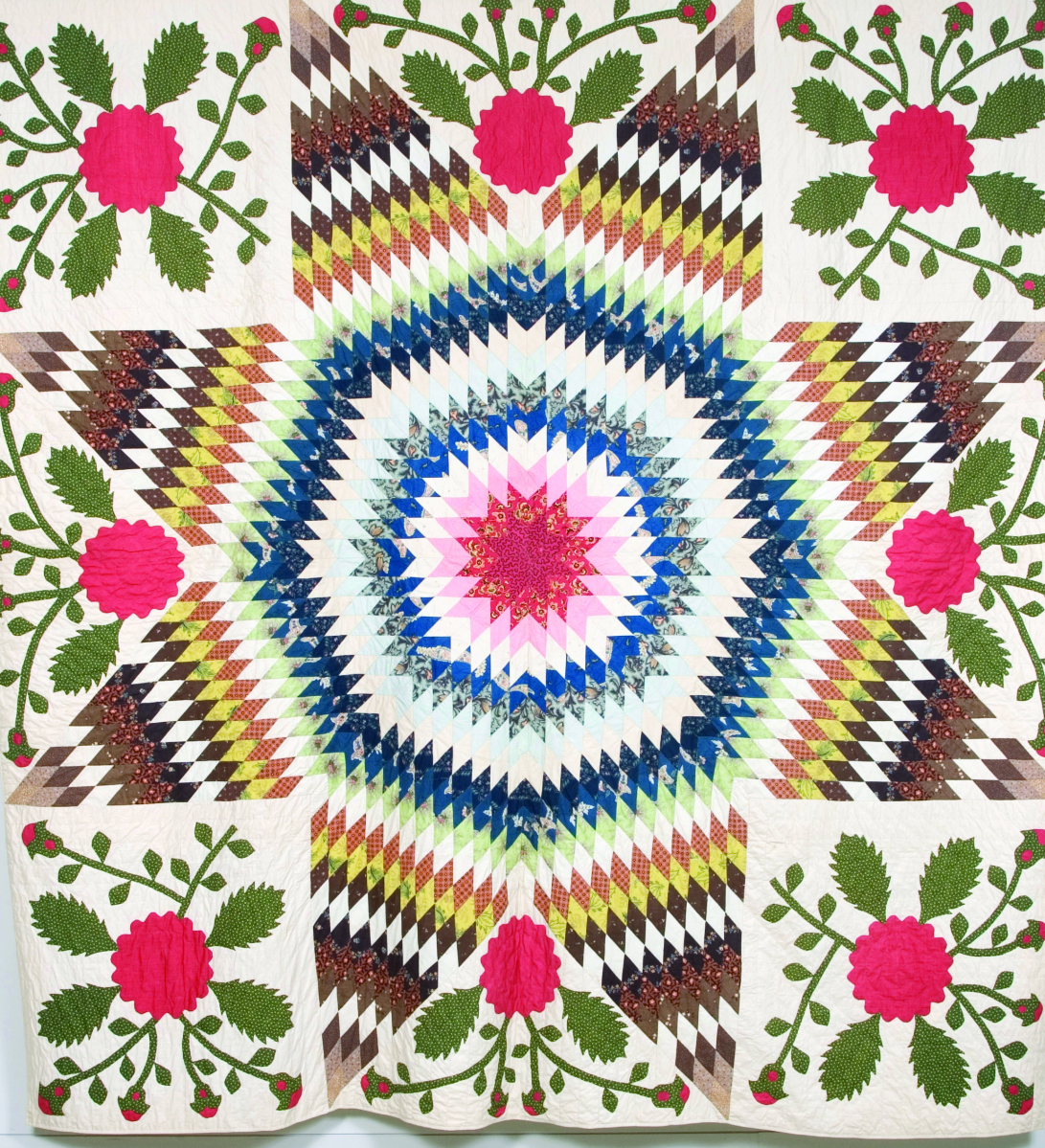
“Ein Wunder Grosser Fisch” drawing attributed to Andreas Kolb, from the Governor Samuel W. Pennypacker collection, Lower Salford Township, Montgomery County, circa 1790–1800.
By Candace K. Perry
PENNSBURG, PENN. – Visitors coming to Pennsylvania from outside the state often associate Pennsylvania German (also known as Pennsylvania Dutch) culture with the Amish of Lancaster County, sometimes even assuming that the group is representative of all Pennsylvania Germans. The truth is, however, that the Pennsylvania German culture is large and diverse, and there is a lot more to it than buggies and hex signs.
Enter the Schwenkfelder Library & Heritage Center in Pennsburg, Montgomery County. The Schwenkfelder is one of the most venerable historical institutions in the state and among the earliest to focus on an aspect of Pennsylvania German history and culture. It has been preserving the history of the Schwenkfelder religious group and the Goschenhoppen and Perkiomen region since 1884.
Although Lancaster County gets a good deal of press – and deservedly so – there are many areas sprinkled throughout Pennsylvania that had nearly homogeneous German populations in the Eighteenth and Nineteenth Centuries, and a visit to these “other” Pennsylvania Dutch regions will show the vast range of experiences and assimilation of the diverse people who fall under that German-speaking umbrella. The Schwenkfelders are one of these groups.
The Schwenkfelders were the followers of a Reformation-era thinker and writer, Caspar Schwenckfeld (1489/90-1561). Rather than following the lead of Martin Luther, Schwenckfeld charted his own “middle way” – a theological path somewhere between Roman Catholicism and Lutheranism, which unfortunately left him branded as a heretic. During his lifetime, Schwenckfeld did not organize a church, but inspired followers, mostly in Lower Silesia (now Poland) who were identified as Schwenkfelders. By and large they were allowed to live peacefully, with occasional bouts of persecution.
 By the early Eighteenth Century, however, a newly installed Jesuit mission in Lower Silesia enacted new sanctions against the group, making life increasingly intolerable. In 1726, the most dedicated Schwenkfelders began to leave their ancestral homes by dark of night, and made their way across the border into Saxony. Most would journey on to Herrnhut in Saxony, where Count Nicholas Ludwig von Zinzendorf had established a community of Moravians on his lands. There they found asylum for a few years, but facing political pressure, they – like the other sectarian Germans – decided to come to Pennsylvania.
By the early Eighteenth Century, however, a newly installed Jesuit mission in Lower Silesia enacted new sanctions against the group, making life increasingly intolerable. In 1726, the most dedicated Schwenkfelders began to leave their ancestral homes by dark of night, and made their way across the border into Saxony. Most would journey on to Herrnhut in Saxony, where Count Nicholas Ludwig von Zinzendorf had established a community of Moravians on his lands. There they found asylum for a few years, but facing political pressure, they – like the other sectarian Germans – decided to come to Pennsylvania.
Over the course of a series of immigrations in the 1730s, the Schwenkfelders arrived in Philadelphia and then sought property to purchase. Some families did not venture far from the city and settled in Germantown and Chestnut Hill, while others traveled a bit farther west, into what is now central Montgomery County; and others headed to the Goschenhoppen, a newly settled area encompassing parts of today’s northwestern Montgomery County and eastern Berks County. Their new homes would expose them to Germans of nearly every variety – Lutheran and Reformed from the German Palatinate, Mennonites and German Roman Catholics. And, of course, Quakers and others of Anglo heritage.
It is in next few decades following immigration that we see two forms of Schwenkfelder visual and material culture begin to flourish. The first is fraktur – Pennsylvania German decorated manuscripts – for which the group and the Schwenkfelder Library & Heritage Center is best known. As with the Mennonites, most Schwenkfelder fraktur developed as teaching tools in one form or another, including the writing models known as Vorschriften (Vorschrift in the singular) and manuscript tune books or Notenbuchlein. The birth and baptism certificates of the Lutheran and Reformed Germans were not used by the Mennonites or the Schwenkfelders, since they did not practice infant baptism.
Fraktur was truly the domain of men, as schoolmasters were male, pastors were male and itinerant scriveners were male. Women were the rare exception, and there were precious few women who made fraktur equivalent to the masterworks of the men. Susanna Heebner (1750-1818), a single Schwenkfelder woman living in Worcester Township, Montgomery County, was perhaps the only female who could hold a pen to the men. The majority of her work, which she made for members of her family, is in the collection of the Schwenkfelder Library & Heritage Center. Heebner’s fraktur are serious business, with emphasis on the spiritual message and the text; only a few pieces have the whimsy and folk appeal of collectors’ dreams.
Heebner was influenced by two of her contemporaries – the Mennonite schoolmaster Andreas Kolb and the Schwenkfelder schoolmaster David Kriebel. Some of the Eighteenth Century Schwenkfelders who settled in central Montgomery County attended Mennonite schools, and as a result, a strong Mennonite influence from teachers, starting with the beloved Christopher Dock, author of the first German American pedagogy, to Huppert Cassel and Kolb, can be seen in Schwenkfelder fraktur from that part of the county.
David Kriebel, however, remains today as the fraktur artist that most people will point to as representative of Schwenkfelder fraktur, when in fact his extraordinary work is unparalleled and unique even among the Schwenkfelders. Dr Donald Shelley, author of Fraktur-Writings or Illuminated Manuscripts of the Pennsylvania Germans (1961), expressed wonderment at Kriebel’s work when he first encountered it, as it was so different from anything else identified as Pennsylvania German. The rich foliage in vibrant jewel tones, the exquisitely and meticulously drawn letters that conveyed messages of faith, and later, a fabulous aviary of birds were Kriebel’s gifts to his students and family.
Needlework was the second category of Schwenkfelder material culture – this time in the feminine sphere – that the immigrants brought with them to Pennsylvania and continued for generations thereafter. Girls learned to stitch at an early age, and the making of samplers would be exercises in stitching the alphabet, learning different types of stitches and recording motifs that would be used to decorate other linens. Tandy and Charles Hersh first introduced Schwenkfelder samplers to the world in their 1991 book Samplers of the Pennsylvania Germans, and in the more than 25 intervening years the Schwenkfelder Library & Heritage Center has continued to cultivate this collection.
Today, the Heritage Center owns approximately 50 samplers, most of them Schwenkfelder, and numerous embroidered sewing smalls and later Berlin wool embroideries, including the celebrated Schwenkfelder Townscape needlework pictures. This collection represents the samplers that were made at home, under the instruction and guidance of family and friends, to samplers more in keeping with the concept of “schoolgirl samplers” – those made under the tutelage of a teacher (often English). The Berlin needlework that began to reach American shores in the 1830s, as traditional sampler-making began to fade, captured the imaginations of Schwenkfelder women and Pennsylvania German women in general. It was then also that a shift began as more mature women began to take up the needle to create needlework to decorate their homes, pointing to the fact that at least some women had more leisure time than in a previous generation.
In addition to fraktur and the needle arts, the Heritage Center is home to a collection of nearly 10,000 objects of daily life in Pennsylvania from the 1700s to the Twentieth Century; a large archive of European and Pennsylvania manuscripts, indentures and other material; and a research library of about 30,000 reference and rare books. Among the most notable collections-within-the-collection is the Governor Samuel W. Pennypacker collection of books, manuscripts and fraktur.
Pennypacker, who served as governor of Pennsylvania from 1903 to 1907, was an ardent bibliophile and collector of Pennsylvania German books and manuscripts. He may have actually been one of the first individuals to pursue the collecting of fraktur in a deliberate way; the other would have been Henry Mercer, founder of the Mercer Museum in Doylestown. Officials for the Schwenkfelder Library purchased most of Pennypacker’s fraktur and colonial Pennsylvania material at auction in 1920, creating an important trove of early Pennsylvania sectarian history.
The Schwenkfelder Library & Heritage Center has evolved and grown in its 133-year history, from a small historical society where preservation of the Schwenkfelder heritage was job one to a library and museum that was a destination for a small audience of in-the-know scholars and researchers, and now is a vibrant cultural organization dedicated to the preservation of these collections and heritage but also to public access and visibility. The Heritage Center is a first stop, for example, for many fledgling genealogists exploring their family history; the Goschenhoppen region was a portal for many Eighteenth Century German settlers, most of whom left traces of themselves in church and land records.
In addition to a permanent exhibition on Schwenkfelder culture and heritage, the center has a busy annual schedule of exhibits that highlight aspects of its collections, work of local artists and loans of private collections. The Schwenkfelder offers a wide variety of programming – from the Penn Dry Goods Market annual antiques show and scholarly symposia to local history programs and fun learning activities for kids.
The Schwenkfelder Library & Heritage Center is at 105 Seminary Street. It is open to the public Tuesday through Sunday. Admission is free except during the Penn Dry Goods Market. For additional information, www.schwenkfelder.com or 215-679-3103.
Candace K. Perry is curator of collections at the Schwenkfelder Library and Heritage Center.
The Penn Dry Goods Market runs Friday and Saturday, May 19 and 20, and presents antique and vintage textiles and Americana, plus textile history lectures and classes. Hours are Friday, 10 am to 5 pm, and Saturday, 10 am to 4 pm. General admission is $6. A registration form for lectures and classes is available on the Schwenkfelder’s website.




















